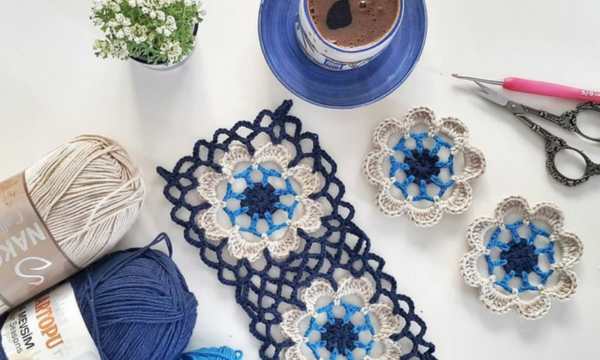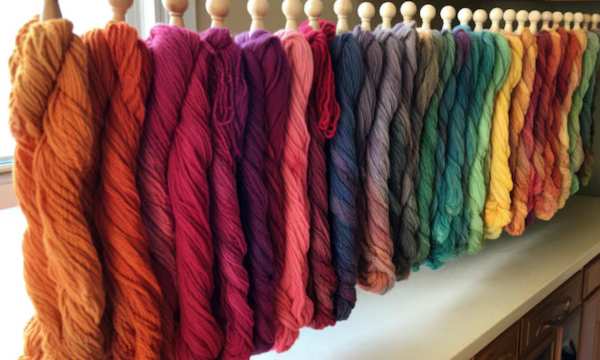Exploring Quilting Thread Patterns
Quilting is an ancient craft that has been around for hundreds of years but has developed into a vibrant and diverse art form.
Ad
The thread you use and the pattern you create with it are the two most important factors in making your quilt look beautiful and structured. This article takes you into the fascinating world of quilting thread patterns. It looks at how these patterns make quilts look better, and what techniques quilters use to achieve such beautiful results.
1. Understanding the Importance of Thread:
Threads are not only useful in quilting but are also an important part of the design process. Using the right thread will give your quilt more depth, dimension, and texture, making it look better. Quilters select their threads very carefully, taking into account factors such as color, weight, and fiber content. The overall appearance of a quilt will change depending on how different threads interact with the fabric.
Ad
2. Types of Quilting Threads:
Before you start learning about thread patterns, you need to understand the types of threads. People like to use cotton thread, polyester thread, silk thread, and metal thread. Each has its unique properties that make it better suited for quilting. You can tell the difference between cotton and silk threads by the degree of shine. Cotton thread is strong and durable. Metallic thread adds a touch of sparkle, while polyester thread is known to retain its color.
3. Line Type Used for Connecting:
People often think that quilt stitches are in the last layer, but the patchwork stage is just as important. The straight stitch also called the ‘ditch stitch’, is used by quilters to seamlessly join quilt blocks together. This simple approach ensures that the stitching is always central, with thread playing a supporting role.
Ad
4. Block Quilt Thread Designs That Draw Attention:
Once you have your quilt together, it’s time to add creative thread patterns to each block. Many people like echo quilting, stippling, and curvy stitches. With echo quilting, you sew parallel lines around different parts of the block to make it look like an echo. Stipple, on the other hand, consists of random small stitches that create patterns with different textures. The quilt feels more dynamic because the wavy stitches allow the pattern to flow naturally.
5. The Function of Colored Lines:
Thread color is an important part of a quilt thread pattern. Quilters often choose thread colors that match the fabric in the quilt. Using contrasting threads can draw attention to certain parts of the design while using matching threads can make the whole look more natural. The way the thread color and pattern interact contributes to the overall look of the quilt.
6. Quilting Thread Pattern to Fill in the Background:
Background filling is important to add interest and texture to the empty spaces in your quilt. Dots, pebbles, and swirls are all common patterns. Because of the small, interconnected stitches, stippling is very flexible and looks great in both modern and traditional quilts. Make a small circular pattern that looks like pebbles, which is what pebbles are. Swirls give the background a vibrant and elegant look.
7. Customizing Thread Patterns for Quilt Themes:
Quilts often have a theme or tell a story, and the thread pattern can be changed to enhance the story. For example, a nature-inspired quilt might use thread patterns that resemble leaves, waves, or feathers. Free-motion quilting machines allow you to create intricate, unique designs that perfectly match the theme of your quilt.
8. Long Arm Quilting and Thread Pattern:
Using a long-arm quilting machine, quilters can easily create large, intricate thread patterns. The long working range and precise control of these machines allow quilters to experiment with complex designs such as pantographs, continuous line patterns, and custom patterns. When quilting with a long arm, you can use different quilting thread patterns to create larger, more intricate designs.
9. Add Texture With Different Colored Threads:
The variegated thread has different colors on one thread, which makes quilting more interesting. Because the color changes throughout the design, these lines are great for adding texture. Quilters can experiment with using different colored threads in simple and complex patterns to create beautiful pieces that will appeal to people.
10. Balancing Thread Density:
The thread count must be just right for the finished quilt. Quilters carefully consider the spacing and density of the stitches to prevent the fabric from twisting or wrinkling. Different thread densities can be used to draw attention to certain areas of the quilt, giving it more depth and visual appeal.
Conclusion
Quilting thread patterns is a lot of fun and gives you a lot of freedom to be creative and express yourself. Quilters can use thread to take their work to the next level, whether they do it carefully by hand or using a long-arm machine. Each quilt is a unique work of art because of the way the different types, colors, and patterns of thread work together. As long as quilters continue to try new things, the journey of discovering new quilting thread patterns will always be fun and new.
FAQs
1. What does it mean to choose the right quilting thread?
Yarns are not only useful but they can also be used as design elements to give a quilt more depth, dimension, and texture. Using the right thread can make your quilt look better and change the look and feel of the fabric in certain ways.
2. What are the main types of thread used in quilting?
People usually choose cotton, polyester, silk, or metal threads. Strength, shine, color fastness, and charm are unique to each type.
3. Are there specific thread patterns used to assemble quilt blocks?
Yes, quilters often use a straight stitch, called a ditch stitch, to smoothly join quilt blocks together during the piercing step. This simple style ensures that the stitching always takes center stage.
4. How does threading make any quilt stand out?
To make each block look better, you can use creative thread patterns such as echo quilting, stippling, and winding stitches. These patterns make the quilt look more interesting and give it movement.
5. Why is the color of the thread important when sewing?
The color of the thread matches the fabric of the quilt. Different colors of thread can draw attention to certain areas of the quilt while matching threads blend in with the design and change the overall look of the quilt.
6. What are the background fill line patterns?
Background fills, such as stipples, rhinestones, and swirls, add interest and texture to empty spaces in a quilt. These patterns enhance the overall look and can be customized to match the theme of the quilt.
 All about Handmade Thread Craft
All about Handmade Thread Craft
Explore the World of Handmade Thread Craft: Tips, Techniques, and Inspiration! Ad Introduction to Handmade Thread Craft […]
More Choosing the Right Embroidery Needles
Choosing the Right Embroidery Needles
Embroidery is an age-old craft with a long history. Over time, it has transformed from intricate designs […]
More Exploring the Vibrant World of Hand-Dyed Threads
Exploring the Vibrant World of Hand-Dyed Threads
Hand-dyed yarn is a great example of art and craftsmanship in textile art that dates back hundreds […]
More